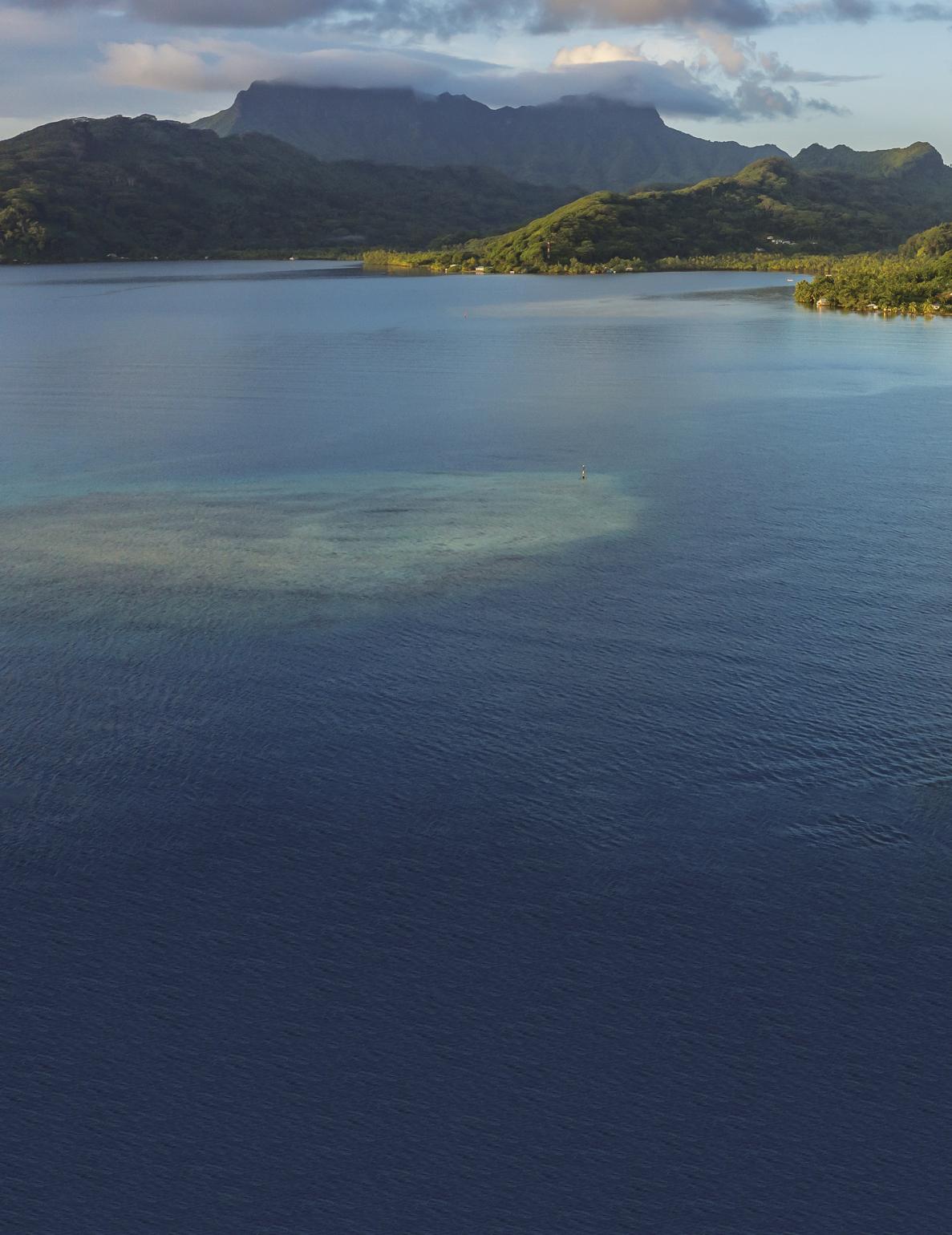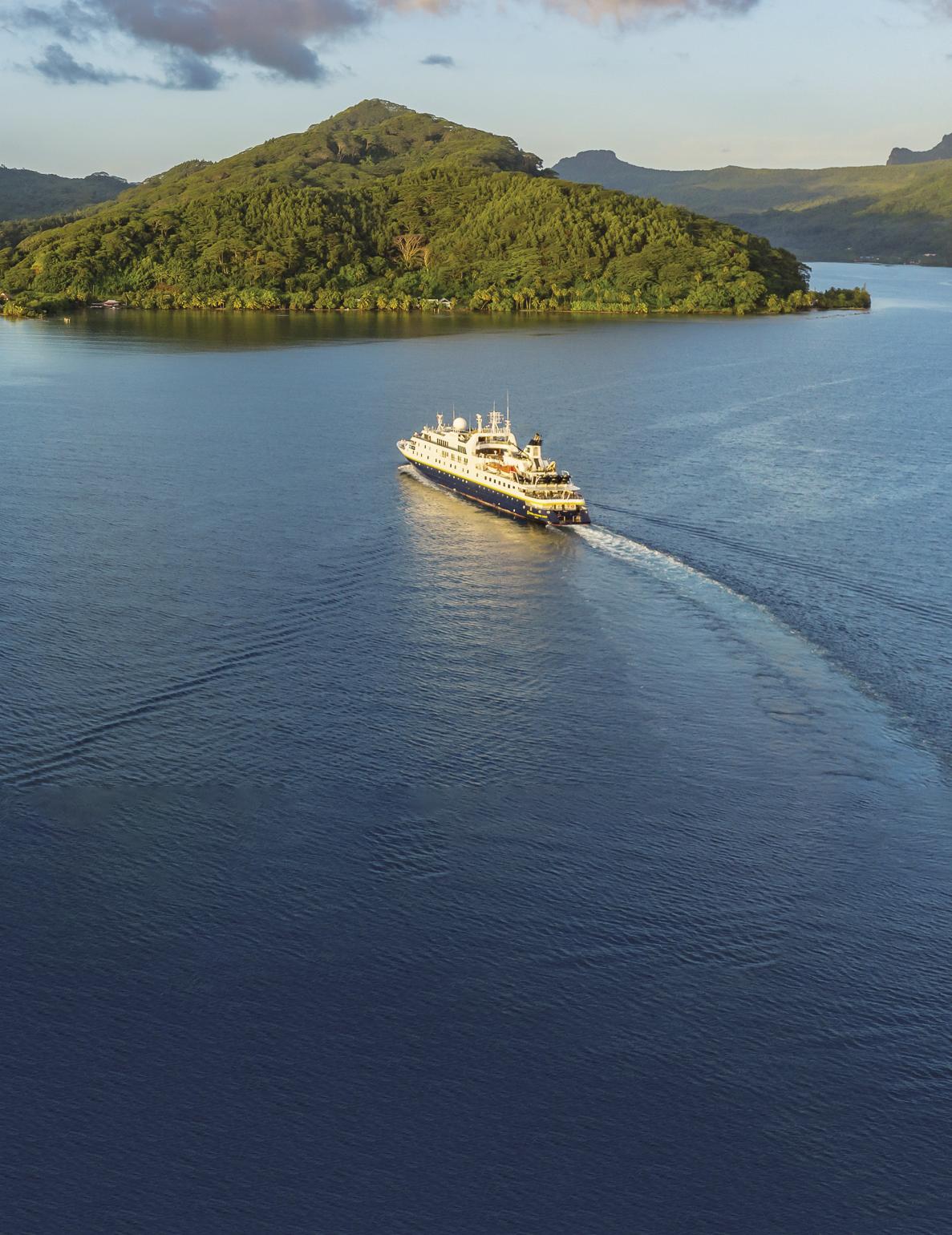
2 minute read
National Geographic Orion: An Elegant Ship for Exotic Islands
The sleek and powerful National Geographic Orion sails the Pacific and its surrounding regions on immersive voyages near and dear to veteran Expedition Leader Tom Ritchie. Here, he talks about what makes this state-of-the-art expedition ship the perfect platform for unforgettable island exploration.
It’s hard for me to fathom this, but I did my first Lindblad expedition 45 years ago when I was hired to work as a naturalist and lecturer aboard the M.S. Lindblad Explorer. This vessel, with her unique design and abilities, was designated by the U.S. Coast Guard as the world’s first Expedition Passenger Vessel. Since that first trip, I have been on close to 700 ship-based voyages throughout my career with Lindblad Expeditions.
So, what is an Expedition Passenger Vessel? A true expedition ship must be relatively small, in order to explore inshore waters, bays and rivers. Often operating in uncharted or poorly charted waters, expedition ships must be self-sufficient, highly maneuverable, and manned by a highly skilled crew able to handle operations that no big cruise ship would ever attempt. The ships in the Lindblad Expeditions-National Geographic fleet accommodate only 48 to 148 guests; they allow us to explore wild and little-known regions of the world, experience amazing wildlife, and encounter exotic cultures up close. What could be more satisfying than this style of travel for any serious and inquisitive traveller?
From the “Little Red Ship”, as M.S. Lindblad Explorer was affectionately called, the fleet has grown to 10 expedition ships. While I enjoy travelling aboard all our ships, I have to admit that I have a special place in my heart for National Geographic Orion. Elegant with classic nautical lines, I think she is the most beautiful vessel in the fleet. She affords
great comfort in her onboard accommodations and many amenities for only about 100 guests. With her modern navigational equipment, greatly effective stabilizers, and high ice classification, she can travel throughout the oceans of the world from the High Arctic to Antarctica.
Although National Geographic Orion was built to handle the extreme conditions of polar waters, she is perfect for exploring the magnificent islands of the South Pacific. With 14 Zodiacs (including a glass-bottomed one), we can land on most any island shore and can also experience the bountiful undersea life by way of snorkelling and SCUBA diving. What I like most about National Geographic Orion is her deck space which offers plenty of room to view birds, schools of fish, and other marine life. Imagine steaming between the exotic islands of Melanesia or Polynesia, and going ashore to explore green, lush, high volcanic isles, as well as barely-out-of-the-sea coral atolls, or diving into the warm, crystal-clear waters and witnessing firsthand the vibrant undersea life. Many of these seldom-visited islands are inhabited by friendly and welcoming people, who are often as eager to meet us as we are to meet them.

I am always eager to return to the South Pacific. Within the vastness of this area are a multitude of cultures and histories, flora and fauna and island types. Exploring these waters is both wondrous and fascinating. I sincerely hope you are able to join us.






